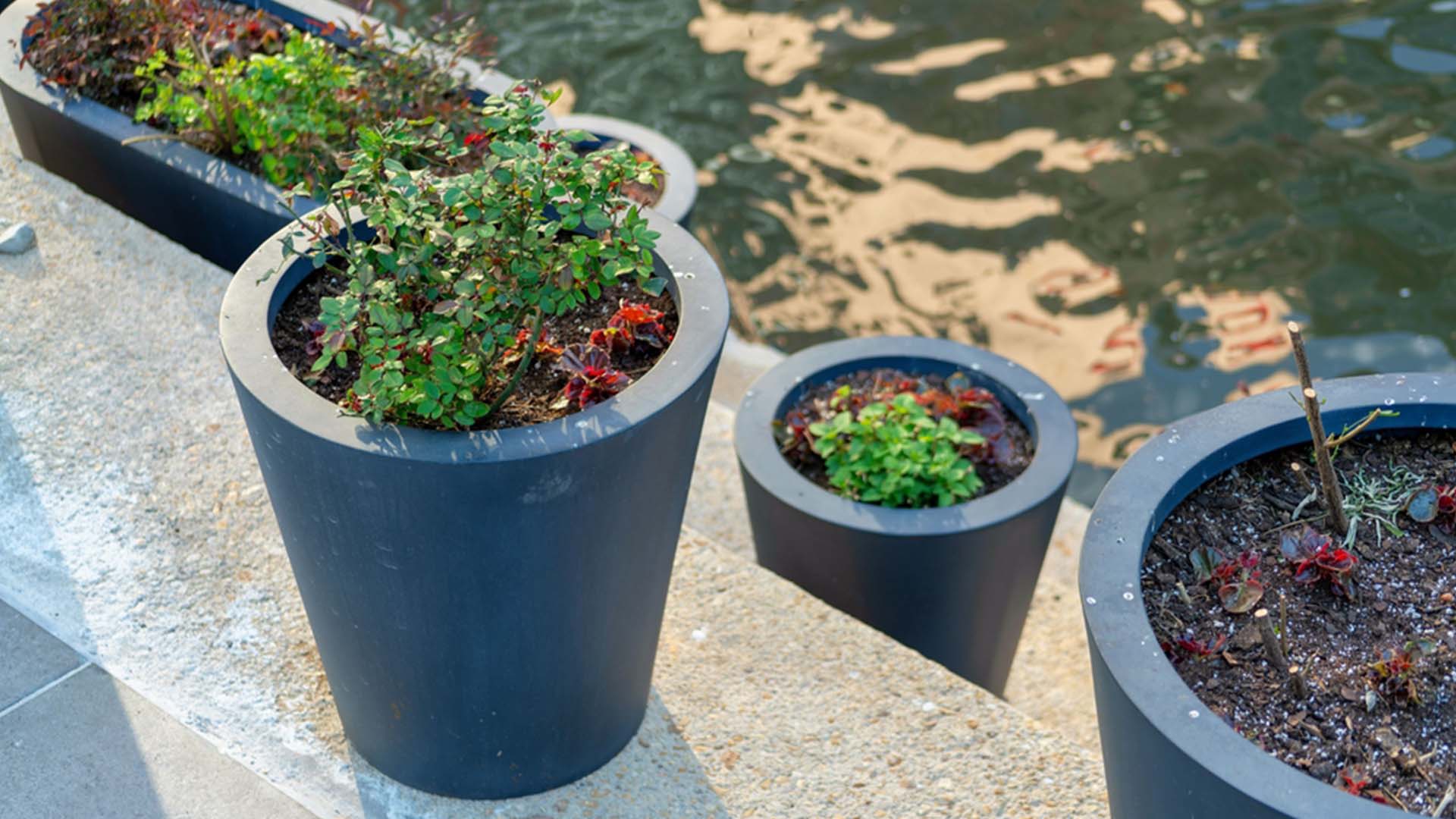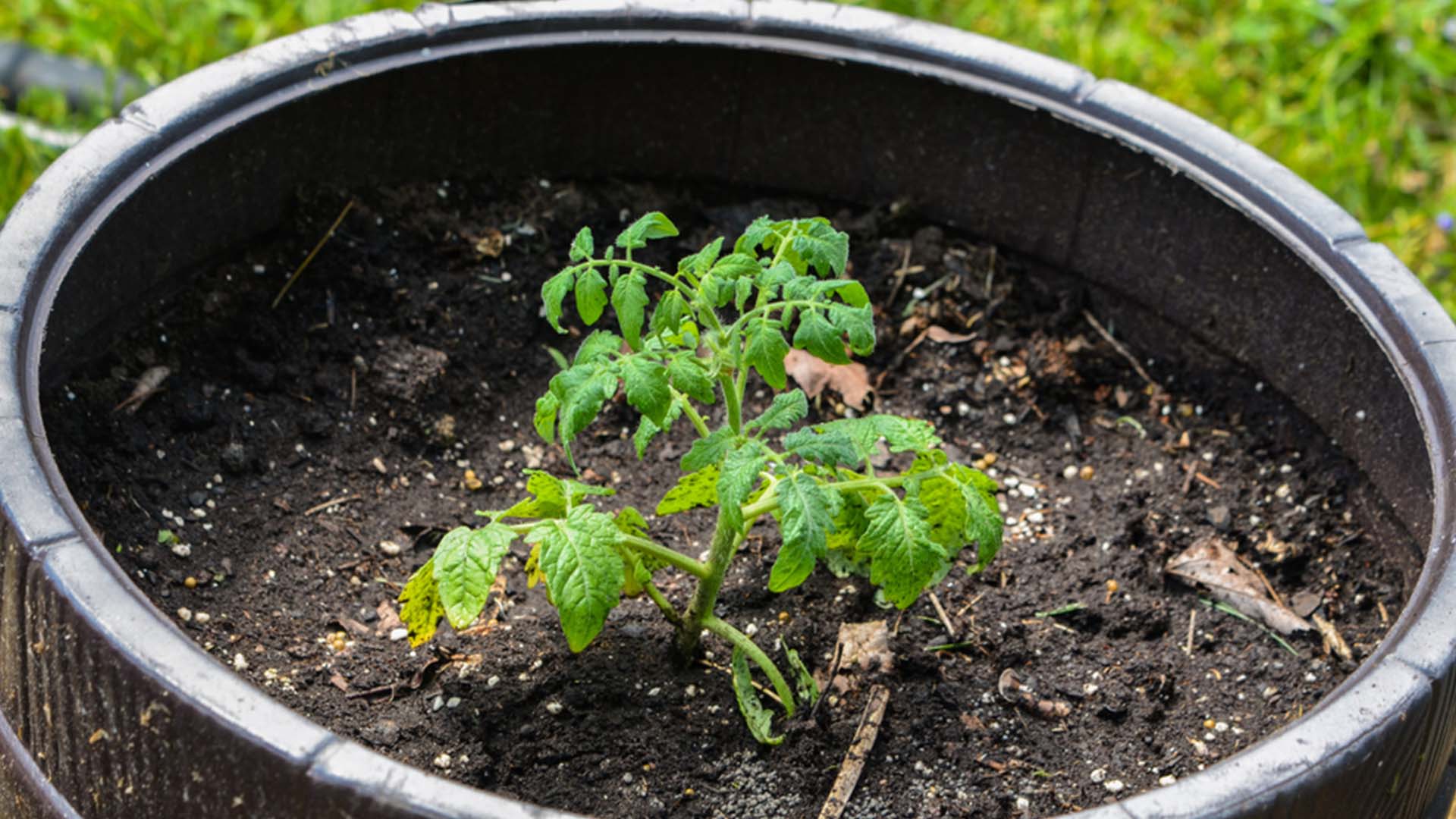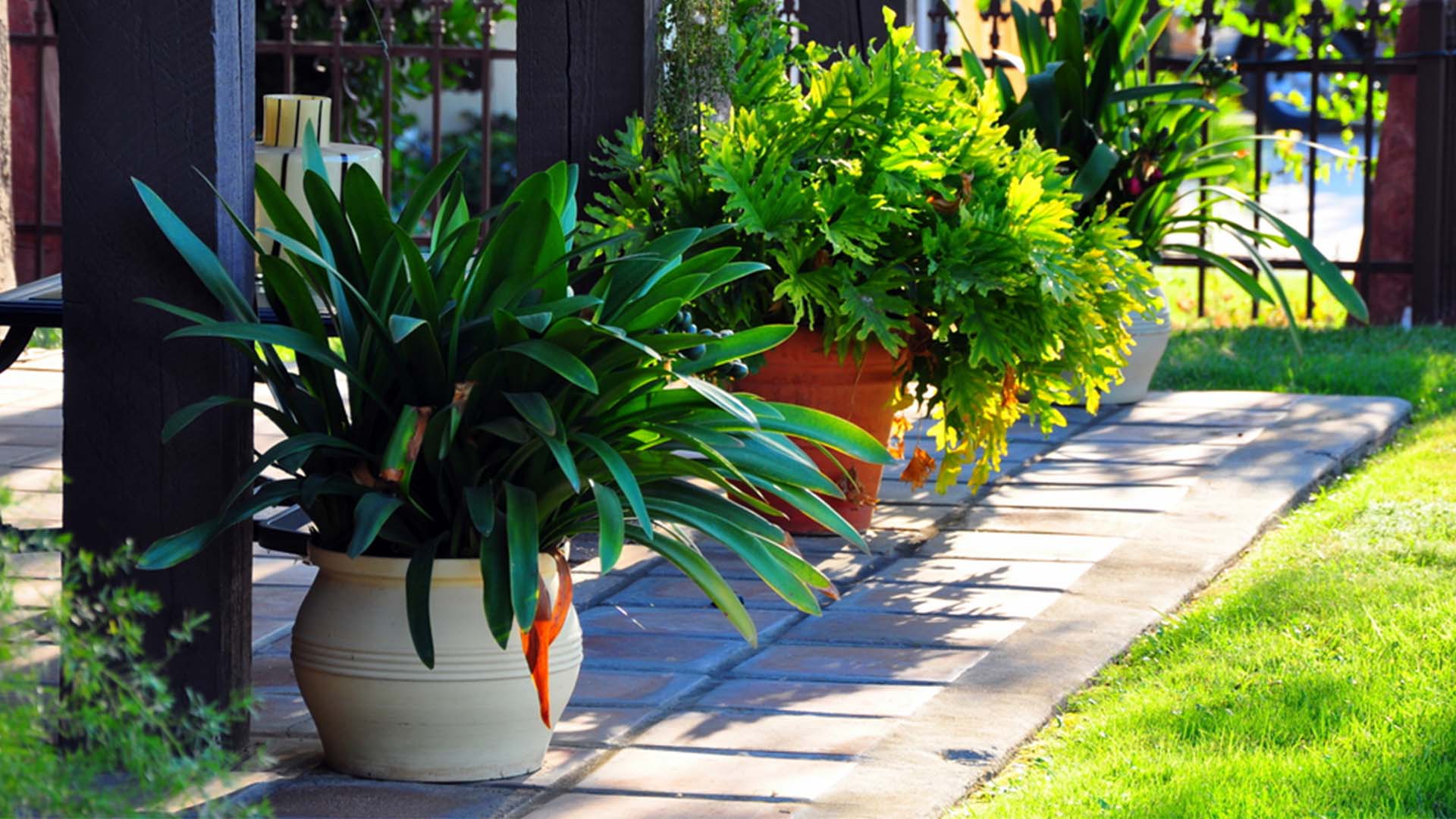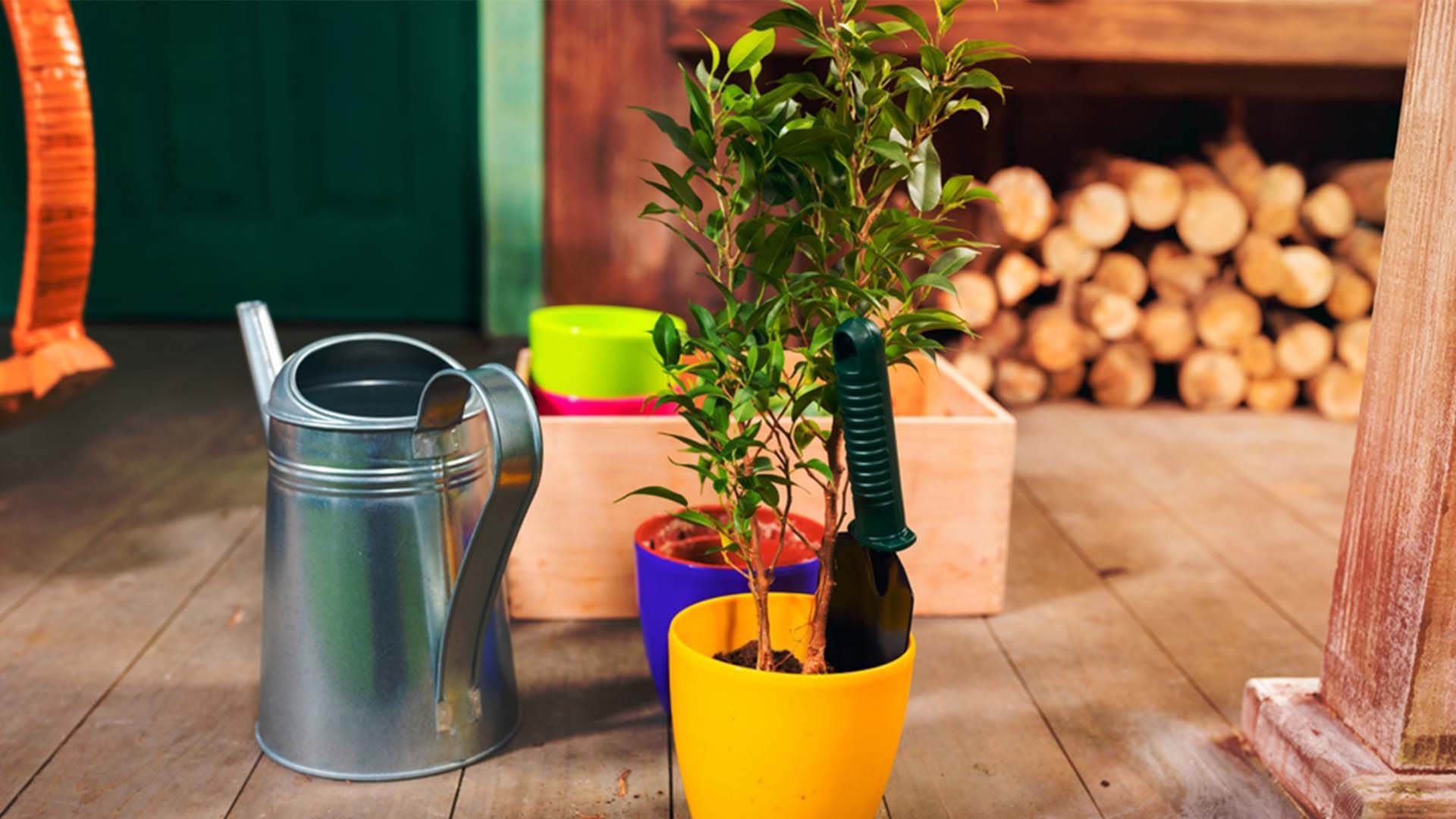Potted patio or porch plants can struggle with the heat, especially since they don’t have the ground soil to keep them cooler. Luckily, the experts have given their advice on how to best protect your outdoor container plants this summer.
1. Choosing the Container

One method to preserve container plants outdoors is by choosing pots that offer insulation. Larger pots, for example, are less prone to drying out because they offer room for a greater quantity of soil, which helps to conserve moisture between waterings. Additionally, ensure you’re choosing lighter-colored containers as paler hues will reflect light better than darker-colored planters. Experts also recommend caution when choosing terracotta pots for container gardens, as they can be particularly porous and cause water to evaporate more quickly. Avoid waterlogged soil and damaged plant roots by ensuring you’re planting into pots with drainage holes.
“Opt for containers made of materials that offer insulation, such as ceramic or thick plastic,” advises Tony O’Neill, a gardening expert at SimplifyGardening.com. “This helps regulate soil temperature and reduce the impact of extreme heat on plant roots.”
2. Soil Care

Experts recommend adding a layer of mulch to your patio plants to further aid in moisture retention by slowing down evaporation rates. Some mulching materials also add nutrients to the soil and are helpful for preventing weeds. For example, Anna Ohler, the Owner of Bright Lane Gardens, recommends adding a mulch layer approximately 2-2.5 inches thick.
‘I always recommend adding a healthy layer of organic mulch (such as cedar chips) to the surface of the soil on a container plant,’ says Anna. ‘This mulch will incidentally also help insulate the plant during the winter months.”
3. Placing Your Plants

Though your outdoor plants need sunlight, experts recommend shielding them from the harsh direct sunlight during the hottest parts of the day. To ensure your patio plants thrive, even in extreme temperatures, consider incorporating sun and shade loving flowers for window boxes, which are specifically selected to endure varying light conditions. Consider positioning your patio plants strategically under existing sources of shade such as awnings, trees, window boxes, etc. Some plant lovers choose to get creative and create their own shade canopy from household materials such as bed sheets, umbrellas, etc.
Gardeners could even employ the aid of a shade cloth, which can be easily hung over your potted plants on the patio or deck. Made from lightweight breathable mesh, they are helpful for temperature regulation as they are designed to block sunlight and heat. These work best when they are installed slightly above the plants without touching them to allow for continued airflow.
4. Keeping Plants Hydrated

Adjusting your watering schedule to account for the added heat without overwatering can be difficult, but plant experts have a few recommendations to help. The Royal Horticultural Society, for example, recommends adding organic matter to aid water retention but cautions against adding fertilizer during planting during the warmer months. This could risk causing more lush growth, making your plants more susceptible to heat damage as they’ll require more frequent watering.
Plants should be watered thoroughly during the summer months, ensuring the soil is properly moistened. To prevent overwatering, as this can be difficult to judge and needs vary for different plant species, gardeners can use tools such as a moisture meter to ensure the moisture content remains at the recommended quantity at the root level. This is crucial for keeping your plants healthy as overwatering can cause root rot. Self-watering containers can also be helpful during heat waves as they will provide consistent moisture to the plants as needed.
‘If you are growing plants with saucers underneath, be sure to remove any standing water from the saucers,’ said Dr. Clydette Alsup-Egbers, Associate Professor of Environmental Plant Science at Missouri State University. ‘Be aware that plants may need water more than once a day, especially if it’s a larger plant in a smaller container or if the wind is strong.’







